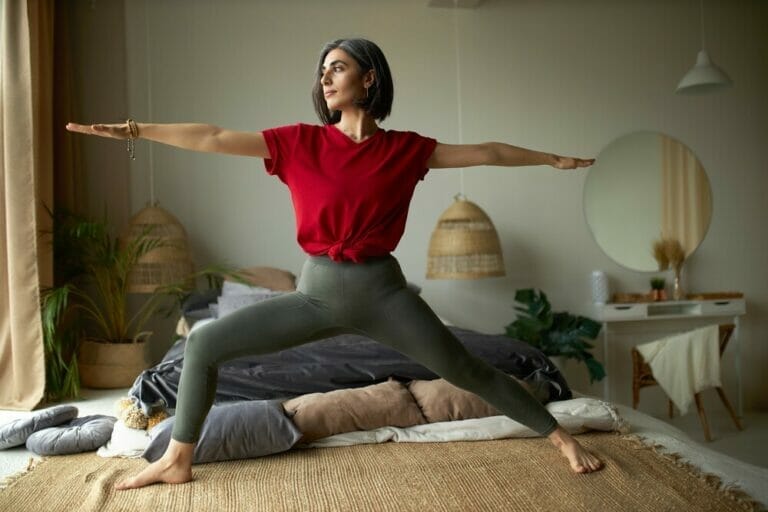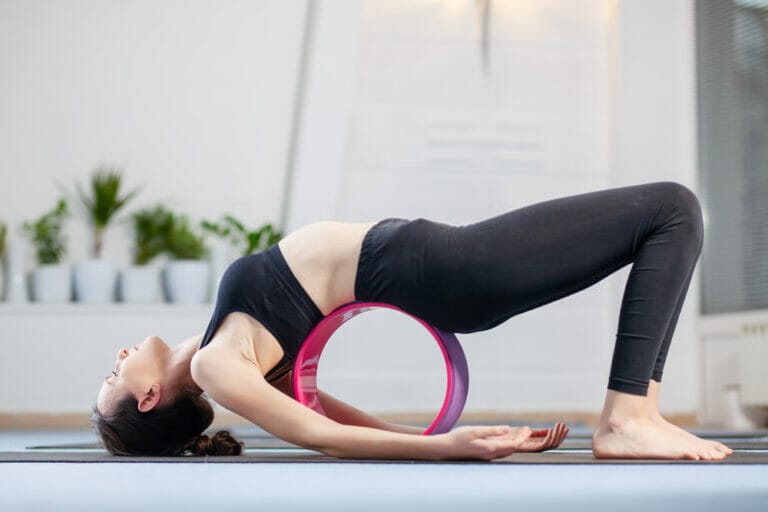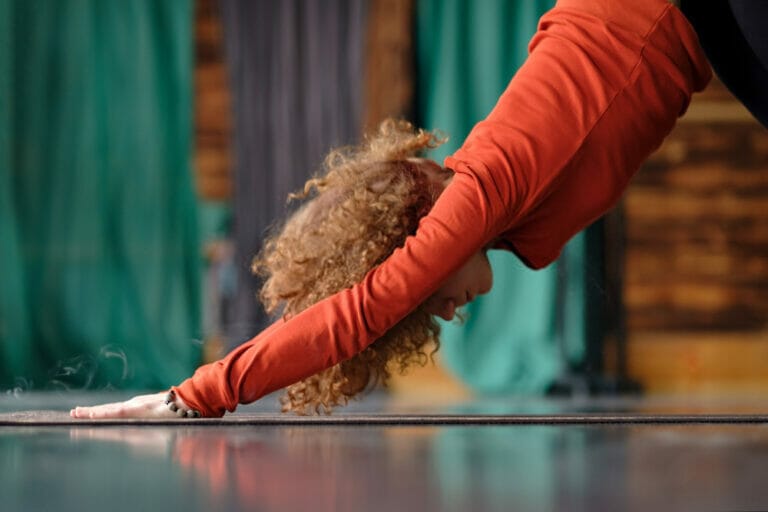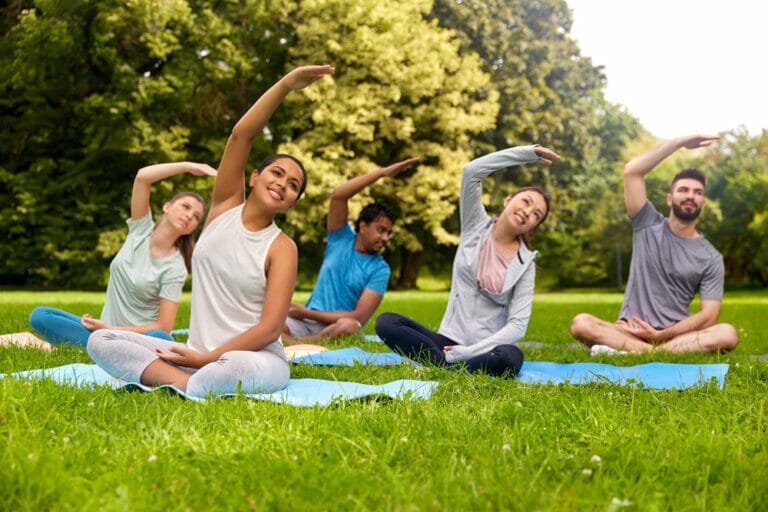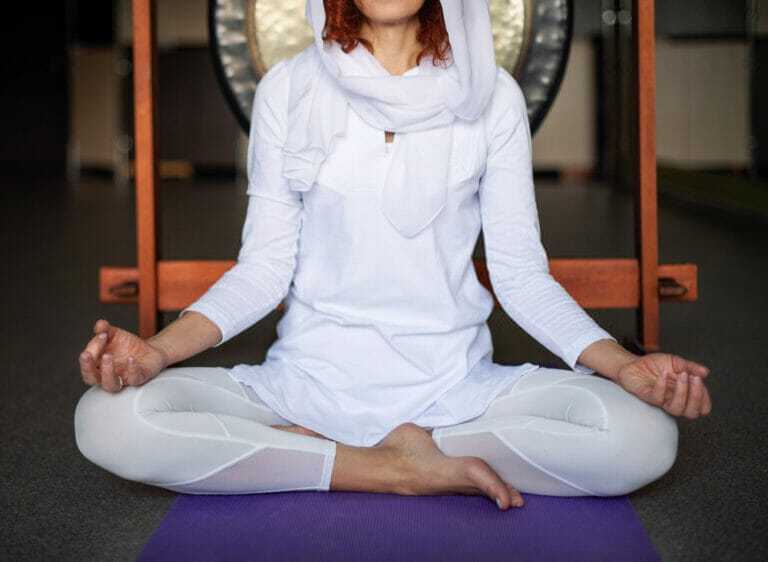Ashtanga Yoga
Do you want to know all about Ashtanga Yoga?
Do you like to learn about its history, its benefits, and its significance? Then, you have come to the right place!
In this blog post, I will be talking about Ashtanga Yoga. Included in this article are a brief introduction, a definition, an explanation of how it influenced Yoga as we know it today, and lastly, some key differences between different types of Yoga.
First, let’s start with a brief definition.
What is Ashtanga yoga?
Ashtanga comprises of two Sanskrit words: “Ashta” and “Anga.” “Ashta” means the number eight, while “Anga” refers to a limb or physical component.
As a result, ashtanga integrates the eight limbs of Yoga into a single, comprehensive, and holistic discipline.
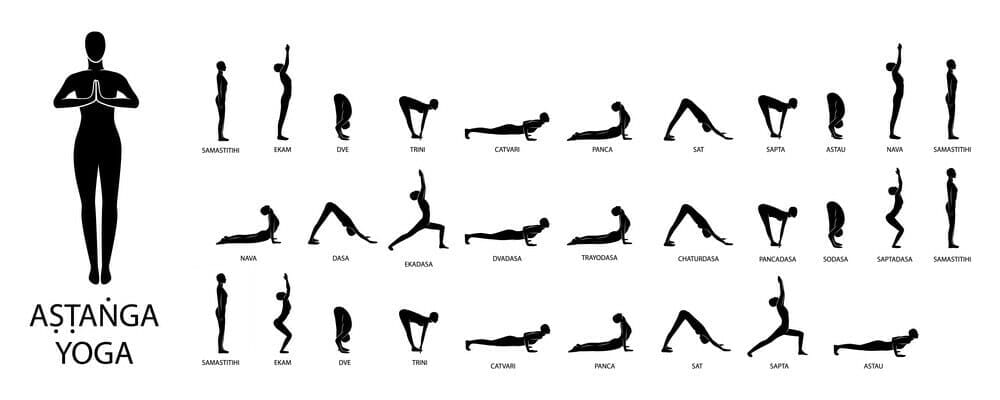
Yoga has four different categories: Yama, Niyama, Asana, and Pranayama. Putting all of these together, you have Ashtanga Yoga.
The Ashtanga philosophy seeks to combine all of Yoga’s eight limbs, which are:
- Yama (moral code),
- Niyama (self-discipline),
- Asana (posture),
- Pranayama (breath control),
- Pratyahara (sensory withdrawal),
- Dharana (concentration),
- Dhyana (meditation), and
- Samadhi (oneness with the self).
Thus, Ashtanga Yoga is not one of the six other types of Yoga. Instead, it is an integration of all six forms of Yoga, which includes Hatha Yoga.
The History of Ashtanga Yoga
T Krishnamacharya first coined the name ‘Ashtanga’ in the 20th century. However, many years before Krishnamacharya named the practice after the eight limbs of Yoga, he and his student Pattabhi Jois co-founded a style of Yoga called “Ashtanga Vinyasa Yoga.
"The practice was called "Ashtanga" because it combined eight limbs, which included the physical postures and movements of Asana with the principles of Dharma Yoga to create a complete system for learning how to control one's breath and mind.
Patanjali & Yoga Sutras
The Yoga Sutras is one of the texts that are closely related to Ashtanga Yoga. For example, the concept of the eight limbs of Yoga is from Patanjali’s Yoga Sutras, which also provides a very detailed explanation of each of the limbs.
So let's learn more about the eight limbs and how they relate to Ashtanga Yoga.
The Eight Limbs of Yoga: The Ashtanga Philosophy
Yama
A branch of the traditional Hindu philosophy, the Yamas are five ethical guidelines that help shape your behaviour.
They provide general rules or moral codes that regulate your conduct and interaction with other people, thus allowing you to harmonize your relationship with other human beings.
Other than Ashtanga Yoga, the Yamas are also part of many different yoga philosophies and practices. There are five Yamas:
- Ahimsa (non-violence)
- Satya (truthfulness)
- Asteya (not stealing)
- Aparigraha (non-greed)
- Brahmacharya (proper use of energy)
Ahimsa (peacefulness)
Ahimsa can be deciphered as: not genuinely hurting others, ourselves, or nature; not reasoning negative musings about others or ourselves; and ensuring that what we do and how we do it is done in concordance, as opposed to causing hurt. Peruse more with regards to Ahimsa.
Satya (honesty)
Satya is honesty, yet it’s something beyond coming clean. In a real sense, the word ‘sat’ deciphers as ‘genuine substance’ or ‘unchangeable’.
Our considerations, feelings and mindsets are tradable, yet these are the things that make our reality.
Asteya (non-taking)
Asteya signifies ‘note-taking, yet like different muchiyamas, it implies quite a lot more than that. Asteya emerges from the Vritti (musings/vacillations of the brain) – ‘I’m not sufficient’ or ‘I need something more. It emerges from the absence of confidence in ourselves.
Brahmacharya (control of the faculties/right utilization of energy)
Brahmacharya is frequently deciphered as ‘chastity’ – and is regularly considered irrelevant in our cutting edge culture.
The word Brahmacharya decodes as 'conduct which prompts Brahman'. Brahmacharya can be viewed as the 'right utilization of energy'.
It alludes to coordinating our energy away from outer longings and, on second thought, towards discovering harmony and satisfaction inside ourselves—more with regards to Brahmacharya.
Aparigraha (non-avarice)
Aparigraha – ‘non-possessiveness, and ‘non-connection. This significant Yama helps us take just what we need, keep just what serves us at the time, and give up when all is good and well. Peruse more with regards to Aparigraha.
Niyama
Niyama (the Sanskrit word that means “commitment”) comes from the term niyati, which refers to practising Yoga. Thus, Niyama refers to the daily habits or actions that help you develop Yoga as a lifestyle.
Niyamas are the second of the eight limbs of Yoga. There are five niyamas:
- Isvarapranidaha (surrender to a higher power)
- Svadhyaya (self-study)
- tapas (discipline or burning desire or conversely, burning of desire)
- Shaucha (cleanliness)
- Santosha (contentment)
Asana (proper posture)
Asana means the physical practice of yoga postures or sitting postures. The word ‘asana’ means “pose.” The name of an asana can reveal a lot about its physical position, appearance, or purpose.
Asana is an essential component of Ashtanga Yoga. There are many different styles of practising Asana.
The practice focuses on linking each posture with one’s breath while holding the pose for a specific amount of time.
This particular aspect sets Ashtanga Yoga apart from other styles of Yoga that are focused on synchronizing breathing with physical movements only.
Asanas also have the power to heal the body in many ways. One of the most important ways is by strengthening and soothing our nervous system. Thus, when you practice Asanas, you are helping your body overcome its limitations.
Pranayama (control of breath)
Pranayama refers to control of the breath. Therefore, you may interpret Pranayama as ‘pranayama,’ which means ‘breath – control’ or ‘breath constraint,’ or ‘prana-Ayama,’ which means ‘breath freedom,’ ‘breath expansion,’ or ‘breath liberation.’

Breathing exercise is one of the critical practices in Ashtanga Yoga. The main purpose is to help you cultivate an awareness of your body.
When you practice Pranayama, your attention is focused on the subtle powers present in your body’s breath and energy systems.
Pratyahara (control of senses)
Pratyahara means sensory withdrawal. Pragya means to ‘withdraw,’ ‘draw in,’ or ‘drawback,’ while “ahara” refers to everything we ‘take in’ on our own, such as the numerous sights, sounds, and scents our senses take in regularly.
Pratyahara is a process of control over the senses to intensify meditation and the practice of Yoga. The goal is to learn to withdraw your senses from external stimuli so that you can concentrate solely on your inner self.
Rather than losing our capacity to hear, smell, see, and feel, the practice of pratyahara alters our state of mind such that we become so immersed in what we’re focusing on that the world around us ceases to bother us.
Dharana (concentration)
Dharana means ‘concentration,’ but the word is used in different contexts, such as ‘concentration,’ ‘focus,’ ‘point,’ or ‘point of concentration.’ The term has many meanings, depending on how you interpret it. Dharana has two aspects:
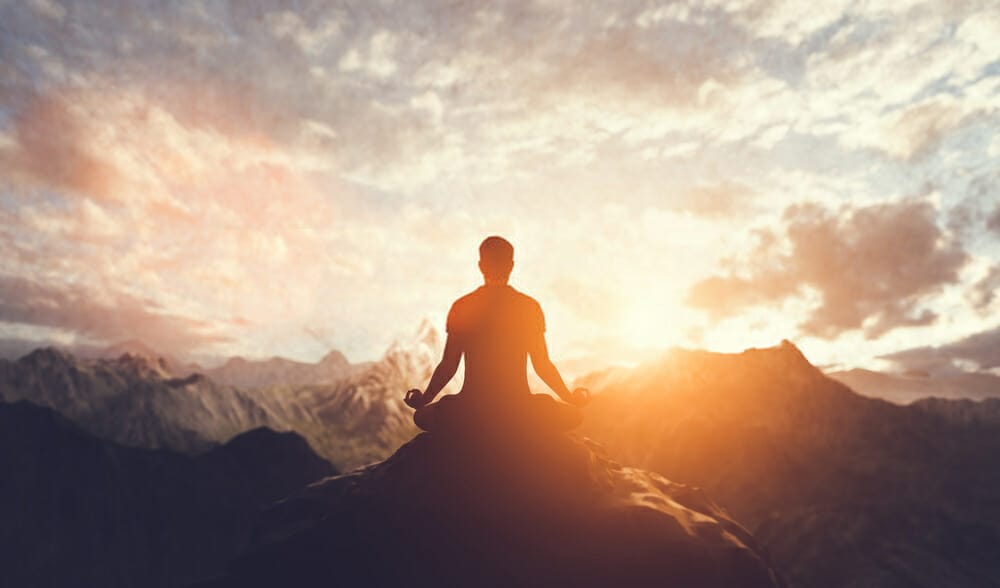
- Dharana is the act of concentrating your attention on an idea or point of focus, which can be physical or mental. It is the first stage in the practice of Yoga that helps you develop your awareness.
When you are in a state of Dharana, you are focused on an object or idea, whether it's forcing yourself to concentrate on breathing exercises or meditating.
- Dharana is also concentrated on one object, idea, or detail and excludes everything else.
Dhyana (meditation)
Dhyana is the seventh limb and means meditation. Meditation is a practice where one’s attention and awareness focus entirely on a single object or idea, such as breathing.
To meditate successfully, you have to eliminate any distractions that might arise during your practice.
Through years of practice, you learn how to concentrate on one thing more deeply without getting distracted.
When you meditate more, it becomes easier for your mind to go deeper into states of meditation with less effort.
Samadhi (union with the divine)
Samadhi means to cultivate union with one’s singular self or your true nature. It’s a process that takes you directly into experiencing the most profound meaning of who you are.

Yoga is essentially the practice of samadhi, which is why it can be so beneficial to your health and well-being. There are many different types of samadhi, depending on what you are concentrating on.
Samadhi is the final step in the practice of Yoga. It’s the culmination of all eight limbs. Samadhi is all about freeing yourself from your distractions, releasing stress, and reconnecting with your inner self.
Types of samadhi
Samprajatna Samadhi: It means the union of the object of meditation with the meditator. Samprajatna samadhi is the highest samadhi when oneness with “the object of meditation” is attained.
Asamprajatna Samadhi is the final stage of Yoga when the meditator becomes ‘blissful’ or devoid of ‘knowledge.’
Now that we know what ashtanga yoga is and its eight limbs let’s dive deeper and learn more about it!
What is the purpose of Ashtanga Yoga?
Ashtanga’s intense physical practices push past mental and emotional obstacles to build mental clarity, mindful breathing, physical strength, flexibility, and endurance.
The three main goals of Ashtanga Yoga are to cultivate mental clarity, develop physical strength, and become flexible.
The yoga postures are practised to create each of these qualities, which will inevitably lead to samadhi.
Advantages And Benefits of Ashtanga yoga?
Ashtanga Yoga is a holy science that is highly beneficial to the practitioners’ bodies, minds, and souls. So let’s learn about the health advantages of Ashtanga yoga and how it may improve a yogi’s life.
Increased Endurance
Yoga postures help you increase your endurance, which means you’ll become more robust and flexible as your body becomes healthier. The more intensely you practice Ashtanga Yoga, the more benefits you’ll reap from its training.
Increased Strength
The asanas strengthen your abdominal and lower-back muscles and the muscles of your legs and arms since you’re using those muscles to support yourself. So the more you do that, the stronger those muscles will be over time.
Weight Loss
Ashtanga Yoga can help you lose weight and maintain a healthy diet because the physical and mental discipline involved forces you to be conscious of what and how much you eat.

Better Posture
Bad posture can cause back problems, shoulder pain, stiff necks, headaches, and more. Ashtanga yoga teaches you to improve your posture so that you avoid all of these things.
In addition, by practising Yoga regularly, your body will begin to remember proper alignment, which is why many experts believe that Yoga helps prevent future injuries.
Better Breathing
Yoga teaches you how to deep-breathe, which lowers your heart rate. Deep breathing also helps promote relaxation, which allows you to focus more easily on the breathing exercises.
More Energy
The intensity of Ashtanga Yoga can burn through your body’s toxins and reduce stress.

So it is because the physical poses encourage you to take a mindful approach to your daily life, which means you're ready to take on whatever comes your way with greater mental clarity.
Better Health
Yoga can help you prevent chronic disease, especially if you do it right. You’ll use the asanas to practice proper breathing and posture, which will keep your heart healthy and prevent future health complications from existing in your body.
Treats hypertension
In a study on more than 100 people with hypertension, the more they practised Yoga, their blood pressure became lower.
In addition, the results showed that regular practice could reduce blood pressure, similar to medications used to treat hypertension.
Setting A Proper Ashtanga Yoga Routine.
Yoga is a practice that will require consistent effort and dedication on your part. Therefore, it’s essential to ensure that you’re doing it right and following all the directions and instructions correctly to get the most out of practice.
As a beginner, you should try to practice Ashtanga Yoga at least two times a week for about 30 minutes at a time.
It is a reasonable length of time because it’s enough to get the benefits but not so long that you’re too tired to continue.
However, longer sessions can lead to injuries and other problems in the long run, so beginners must approach their practice with caution.
How hard is ashtanga yoga?
Ashtanga yoga is challenging. For complete beginners in Yoga, this may be pretty daunting and discouraging.
Even the most basic and modified form of this ancient practice is still somewhat tricky.
But you can continue your practice if you can find ways to make it easier for yourself. Yoga should be challenging because it helps you build strength, endurance, and flexibility.
So when starting with Ashtanga yoga, you will need to set the pace accordingly.
Ashtanga Yoga for Beginners
If you have never practised Yoga before, this is an excellent time to start. Beginners should take the help of a qualified instructor and work with them closely. The good thing about Ashtanga yoga is that you may modify it as a beginner.
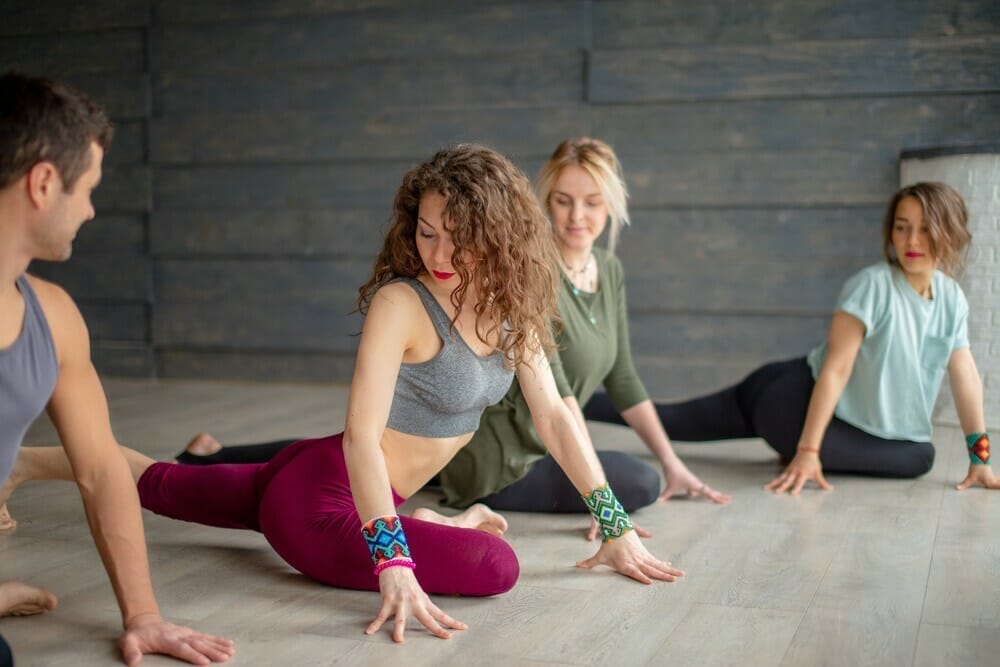
If you are not able to do the poses correctly, the instructor will guide you. You should never force yourself to attempt certain poses if you cannot do them for some reason.
Ashtanga yoga is a three-part series of yoga practices. They are the primary, secondary, and complementary series. The primary series consists of the opening and closing asanas, the standing poses, and the seated poses.
It is a great way to begin your yoga practice because you will build a good foundation for future learning.
Ashtanga yoga For Weakness And Inflexibility
Everyone starts weak and inflexible. If you are just beginning with Ashtanga yoga, expect to be discouraged at times.
You can try to practice the previous postures in each category before attempting the next set.
It can be difficult because you will not yet have developed the strength needed to move on. But if you stick with it, progress will come.
You will be surprised at how fast you can improve your flexibility and strength if you practice Yoga regularly.
Ashtanga Yoga For Weight Loss
Weight loss is a long process, and it usually requires a combination of diet and exercise. One of the best things about Ashtanga yoga is that you can lose weight without starving yourself or working out too much.
Weight loss with ashtanga will primarily come from asanas as you will be doing them with full consciousness and thus more body awareness.
Ashtanga yoga asanas primarily burn fat through the abdominal area. Additionally, they help strengthen your muscles, especially your thighs and buttocks, making you look slimmer. Surya Namaskara is the primary weight loss concentrate in Ashtanga yoga.
You will be doing it 6-10 times at the beginning of the practice, which will burn fat in your abdominal area. It, however, is not intended to be a substitute for rigorous exercise.
For losing weight using Ashtanga yoga, make sure that you are taking good care of yourself. Eat healthy meals regularly and drink water regularly to keep yourself hydrated.
Ashtanga Yoga For Pregnancy
Ashtanga yoga is not for women who are pregnant. When doing Ashtanga yoga, you should practice total concentration and awareness, which is impossible during pregnancy. The added physical stress of the exercise can also be harmful to you and your baby.

However, there are modified versions of ashtanga that pregnant women can do. Be sure to consult your doctor if you have any doubts about doing Yoga while pregnant.
Ashtanga Yoga For Strength
Strength training is essential to prolong and healthy life. It keeps you young and active and increases your body’s resistance to disease and stress.
Ashtanga yoga helps you build strength as it includes inverted poses.
These poses open up your chest and give you deep breaths, making it easier for you to breathe even when lifting weights or doing other strenuous exercises.
Ashtanga Yoga For Stress
Everyone experiences random bouts of stress at some point in their life. Yoga lowers stress levels and relieves anxiety.
It makes it a healthy activity for beginners suffering from stress because it eases the effects of stress on your body.
While practising Ashtanga yoga, you can also experience increased energy levels, which will help you to focus on your practice.
Ashtanga Yoga For Seniors
Can seniors do ashtanga yoga? Yes, absolutely. Ashtanga yoga is suitable for seniors as long as they have not had any previous injuries or illnesses to their back or neck.
Senior adults should not age gracefully – they should age consciously – and the poses in ashtanga yoga help you do so.
The inverted poses will increase flexibility and strengthen their bodies, which will help minimize the effects of ageing on them.
Ashtanga yoga for seniors is beneficial because of its impact on flexibility, strength, and mobility.
As you age, your body becomes less flexible, and yoga help to increase it, which helps to stave off the ageing effects. It also improves your posture, making it easier to move around without straining or hurting yourself.
If you have arthritis or other mobility problems, bring this up with the instructor. They may develop a suitable version of Ashtanga yoga for seniors with these conditions in mind.
Ashtanga Yoga For Personality Development
Ashtanga yoga is not just about the physical aspect of Yoga. It helps you developmentally and emotionally as well.
Regular practice will increase your awareness of your body and how it is interacting with the surrounding environment.
As a result, you can focus more, be less stressed out, and you will begin to see a particular order and beauty in the world.
In addition, Yoga improves positive emotions like joy, hope, love, gratitude, awe, and serenity.
How can One start doing Ashtanga yoga?
The best one to start is with the Pranayama. If you have been practising those correctly, you will be able to continue with the rest.
If not, try them first and keep a gentle pace to focus on your concentration and awareness.
Remember that nobody can perform Yoga very fast – take it slow and steady at first to build up your stamina and endurance over time. You can always make it more quickly once you get to an advanced level.
What Are Some Famous Ashtanga Yoga Institutes
Let’s look at some famous Ashtanga yoga institutes.
The Art of Living Ashram, Bangalore
The Art of Living Ashram is one of the best ashrams globally, not only in India. H.H. Sri Ravi Shankar created it in the year 1982.
It is a volunteer-run organization that also engages in various activities to improve and elevate people's lives.
The centre offers multiple meditation programs, culinary, arts, and dance workshops, yoga classes, gurukula (boarding) schools for home-schooled children or study at local schools. The centre also offers massage therapy classes to the public.
Bihar School of Yoga, Munger
The Bihar School of Yoga is regarded as one of the top yoga schools since it encourages individuals to practice Yoga and motivates them to incorporate it into their daily lives. Sri Swami Satyananda Saraswati created the institution in 1964 in the middle of a 14th-century fort.
The centre combines many yogic teachings-based methods to human development.
It has a modern-day gurukul lifestyle, and the school provides yoga instruction to both regular students and those who have dedicated their lives to spirituality.
Ashtanga Yoga Institute, Mysore
Sri K. Pattabhi Jois started the institution in 1948. The institution also provides yoga classes that last from one to six months. In addition, students can attend Sanskrit courses.
The institution is run by the heirs of Sri Krishna Pattabhi Jois, the renowned Guru. Throughout the year, the centre provides rigorous Ashtanga yoga lessons.
What is the contrast between Ashtanga and Vinyasa Yoga?
Two significant kinds of Yoga are ashtanga and vinyasa, or vinyasa flow. Sri K Patthabi Jois popularised ashtanga from 1948 until 2007; Vinyasa Yoga was introduced much later.
Vinyasa differs from other yoga styles in that it does not adhere to a set of poses and allows for flexibility.
Let’s look at the key differences
Ashtanga has a set sequence of poses
It implies that no matter where you travel, every Ashtanga yoga session you attend will be identical. It will follow the same pattern, sequence, and breath count.
A regular Vinyasa class may follow a rough Ashtanga yoga sequence. If the sequence doesn't suit the beginners, they may modify it to suit their needs.
You may listen to music in vinyasa
Some Vinyasa teachers like to incorporate music into their sessions, which might take the shape of a mantra. However, there is no music or extraneous distractions in Ashtanga yoga.
Ashtanga is taught two ways
It is taught in a guided class environment, with the teacher leading the class through the sequence both verbally and physically.
On the other hand, Ashtanga yoga is conducted in a Led (guided) class or Ashtanga Mysore style class.
You may use props in vinyasa
Ashtanga yoga teachers discourage the use of supports as a general rule. Yoga blocks, straps, and bolsters are examples of yoga problems. The purpose of this is to avoid interfering with the practice’s flow.
Nonetheless, people use supports in Vinyasa yoga, which, when used appropriately, may assist deepen poses or even rectify faulty alignment.
Ashtanga yoga has a one-pointed focus; vinyasa has an unfocused, flowing nature
What is the difference between Ashtanga and Hata Yoga?
Between Ashtanga and Hatha Yoga, there are several distinctions. Hatha yoga is the most popular kind of Yoga and is ideal for beginners. On the other side, Ashtanga yoga is a more energetic and disciplined kind of Yoga.
Let’s look at the differences
Hatha Yoga is slower than Ashtanga yoga
In a Hatha yoga session, postures are for longer than they are in an Ashtanga. Therefore, the pace of the flow in an Ashtanga session is faster than a Hatha session.
Ashtanga yoga requires a lot of flexibility and strength
Typically, in an Ashtanga session, participants must fold themselves into specific postures and hold them for extended periods.
It is pretty challenging because the student has to focus on maintaining correct alignment while learning to control their body.
Ashtanga is hard
When you start learning Ashtanga yoga, it’s likely to be hard for you due to its high intensity. Initially, your body will feel stiff and highly exhausting.
However, as your body gets used to the practice, your flexibility will improve, and the practice's intensity will be less taxing.
Hatha uses props
In Hatha Yoga, people use props to assist with alignment. They include blankets, blocks, and straps. As a result, the poses are less demanding on the body because you can relax into them.
The above comparison shows that Ashtanga yoga is highly demanding and very different from other forms of Yoga.
Why is Ashtanga Yoga known as Raja Yoga?
Ashtanga Yoga is a type of Yoga that examines the mind and attempts to control it. Therefore, another name for Ashtanga Yoga is Raja Yoga. The word Raja signifies “king” or “highest.”
In that sense, you may call all Yoga types Raja Yoga because they all lead to the ultimate level of realization in their unique way.
In other words, Ashtanga Yoga is a path to attaining the highest level of consciousness through posture and meditation.
Conclusion
There you have it! Now, you are aware of Ashtanga Yoga. As we have seen above, Ashtanga Yoga is a very unique and demanding form of Yoga that is based on the practice of meditation.
However, despite its imposing and challenging nature, many people agree that Ashtanga Yoga is beneficial and can benefit their lives to varying extents.
Most important is to respect what it means to practice Ashtanga Yoga and put everything into it. You will be surprised at the rewards you get from practising this kind of Yoga!
I hope you enjoyed this article! If you have any queries, I would love to hear from you in the comments below.
Also, if you have any other questions about Ashtanga Yoga, please feel free to comment, and I will do my best to answer.


